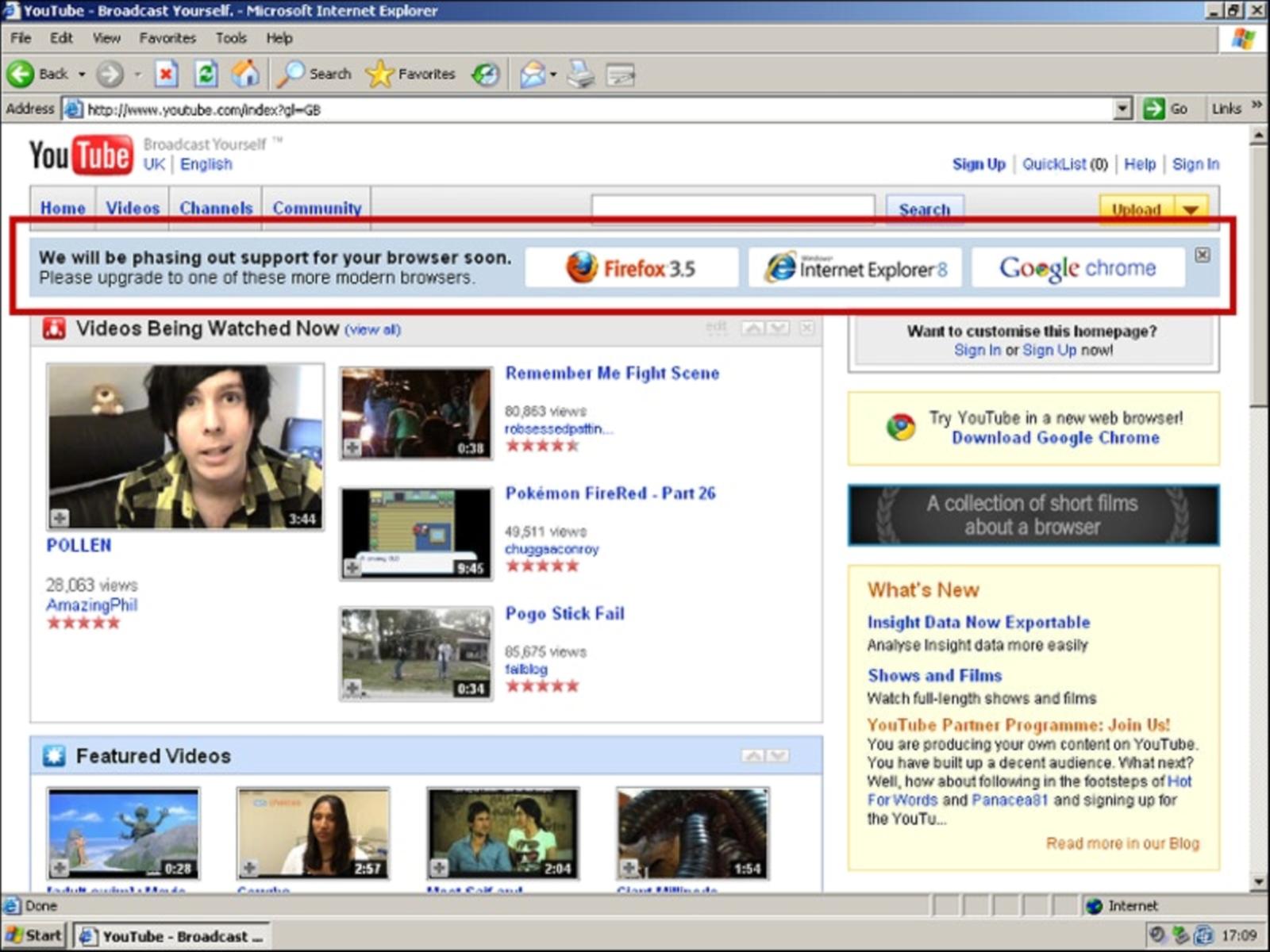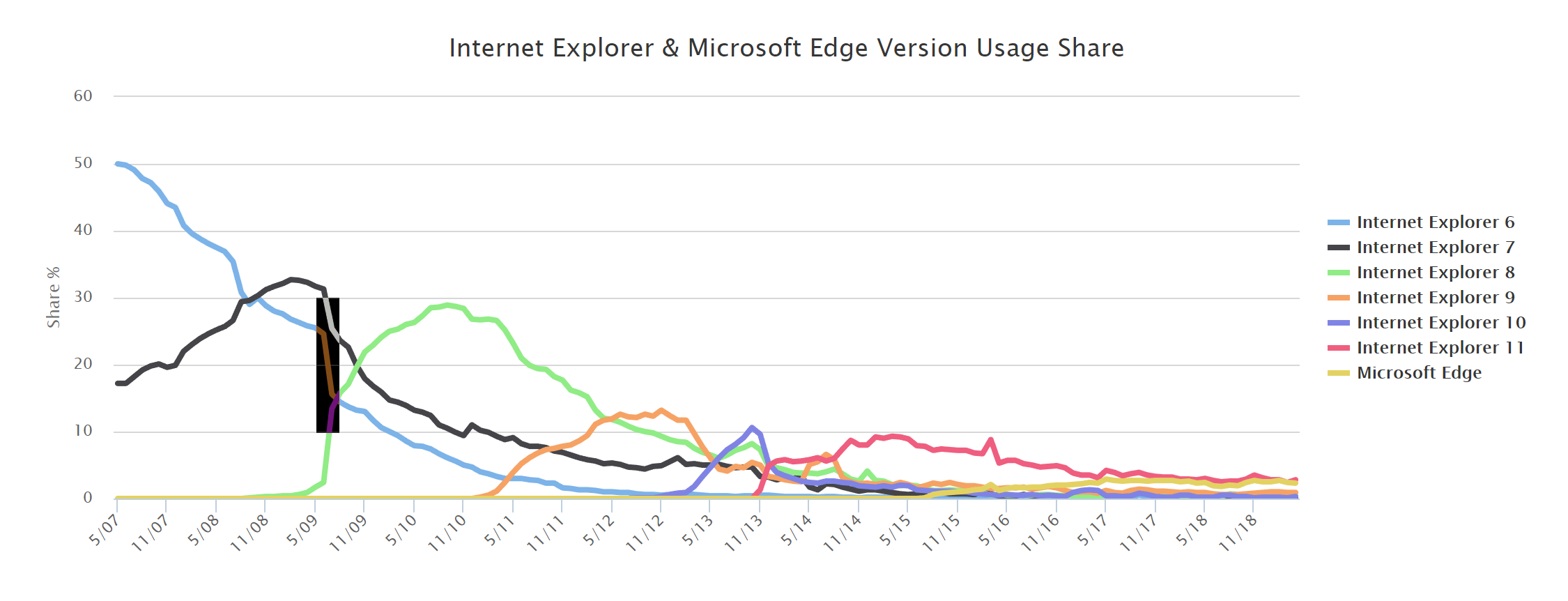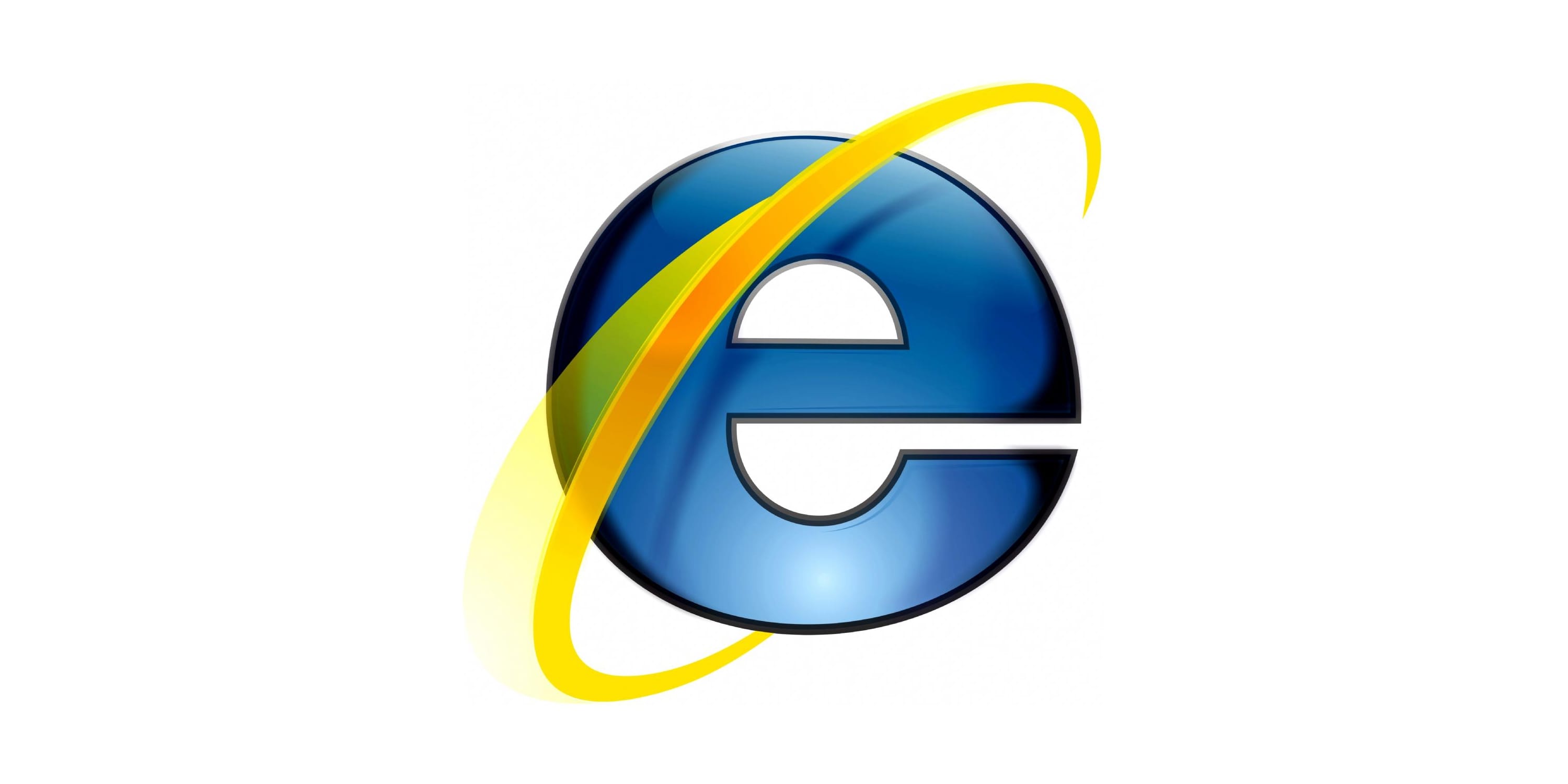Through the looking glass: Like the flick of a switch, millions of users abandoned Internet Explorer 6 in the weeks following July 14, 2009, halving its popularity in a month. The cause was the world's most popular websites suddenly threatening to drop support for the aging browser. Not because they were genuinely going to drop support, but because a group of YouTube's web developers decided they hated IE6 so much they would risk their jobs to kill it. A decade later, former developer Chris Zacharias has revealed his complicity in the scheme.
Having debuted shortly after the release of Windows XP in 2001, IE6 was a mess by 2009. If a web developer accidentally used an unsupported HTML element, IE6 would probably crash and might even cause the infamous blue screen of death. If a web developer removed an image without deleting the code that referenced it, IE6 would continue sending requests to the website's servers in an exponentially expanding recursive loop that threatened to melt down the servers if the offending code wasn't erased in a timely fashion.
Every web developer hated it, and Microsoft did, too. But these were the days when companies viewed the internet as a stagnant thing and wouldn't update their custom software for years and years, limiting employees to one browser.
At the time, YouTube was the second most popular website on the internet and 18% of their traffic came from IE6 users. But YouTube's sleep-deprived and stressed web developers (including Zacharias), self-described as having "penchants for gray-hat hacking, fast cars, and hard whiskey and an uncommon number of piercings, tattoos, and minor arrest records" were past caring. One day, a lunchtime bitching session turned into a plan to kill IE6.
The plan was simple: a small banner at the top of the page that said, "We will be phasing out support for your browser soon," and it gave links to Firefox, IE8, Chrome, and later Opera, too. It didn't commit to any timeline, nor did it specify what dropping support might mean. Scary enough to work, vague enough to run with.

Of course, this was a complete lie, even with the rapid drop in IE6 popularity following the release of the banner it still took two years for YouTube to phase out support. Knowing their superiors at Google wouldn't approve the banner at all, the team of developers used OldTuber privileges - unlimited privileges designed to appease old YouTube developers who didn't want to surrender their power over the platform when Google bought it. The devs weren't even meant to have them, they'd been hired by Google after purchasing YouTube, but their boss gave it to them for the sake of equality.
Google had endless code reviews; OldTuber privileges let them bypass them all. Of course, if you used OldTuber privileges and you stuffed up, well that was on your head and you'd probably get fired. Using them in direct breach of policy like this could result in worse.
After convincing their boss not to report them but to keep an eye out in case things went sour, they wrote the code and injected it. The first person to come to their desks was the PR lead, looking fairly sour for a normally enthusiastic man.
He'd come in from a normal day at work to discover that every tech news site had been writing and asking about why in hell a massive website like YouTube was alienating a fifth of its userbase. Luckily for him, the media had already chosen an angle: YouTube was leading the charge towards a more modern and secure internet, by forcing companies and users to move away from an aging browser towards more superior ones. After getting the details from the developers, he warned them to consult him next time but acknowledged the positive press and went away to answer his emails.
Next came the lawyers, who demanded they remove the banner over fears it would become a target for Europe's anti-competition laws. As it happened, for both lawyers Google Chrome had come up as the first recommended modern browser, when it was actually randomized to recommend multiple newer browsers. They left after a demonstration of the randomization.
Then, quiet.
A day later, a group of engineers congratulated the developers after reading the news, but that was it. Confused, the engineers asked a manager what he thought about the banner launching. "Oh, I just figured you guys copied the banner that Google Docs had put up," he'd responded. Unbeknownst to the YouTube developers, the teams behind Google Docs and various other Google services had seen the banner, assumed it got approval and put up their own in a matter of hours.

The media assumed that the move had come right from Google's executives, as it was so ubiquitous amongst their services. By the time someone thought to ask who'd made the decision to reverse the policy, it was far too late. Thousands of websites had rolled out similar banners and IE6 was already in the past. With a slap to the wrist, Google's executives begrudgingly agreed that the end had justified the means. IE6 was, after all, a massive pain. The plan was far more successful than anyone had expected.
